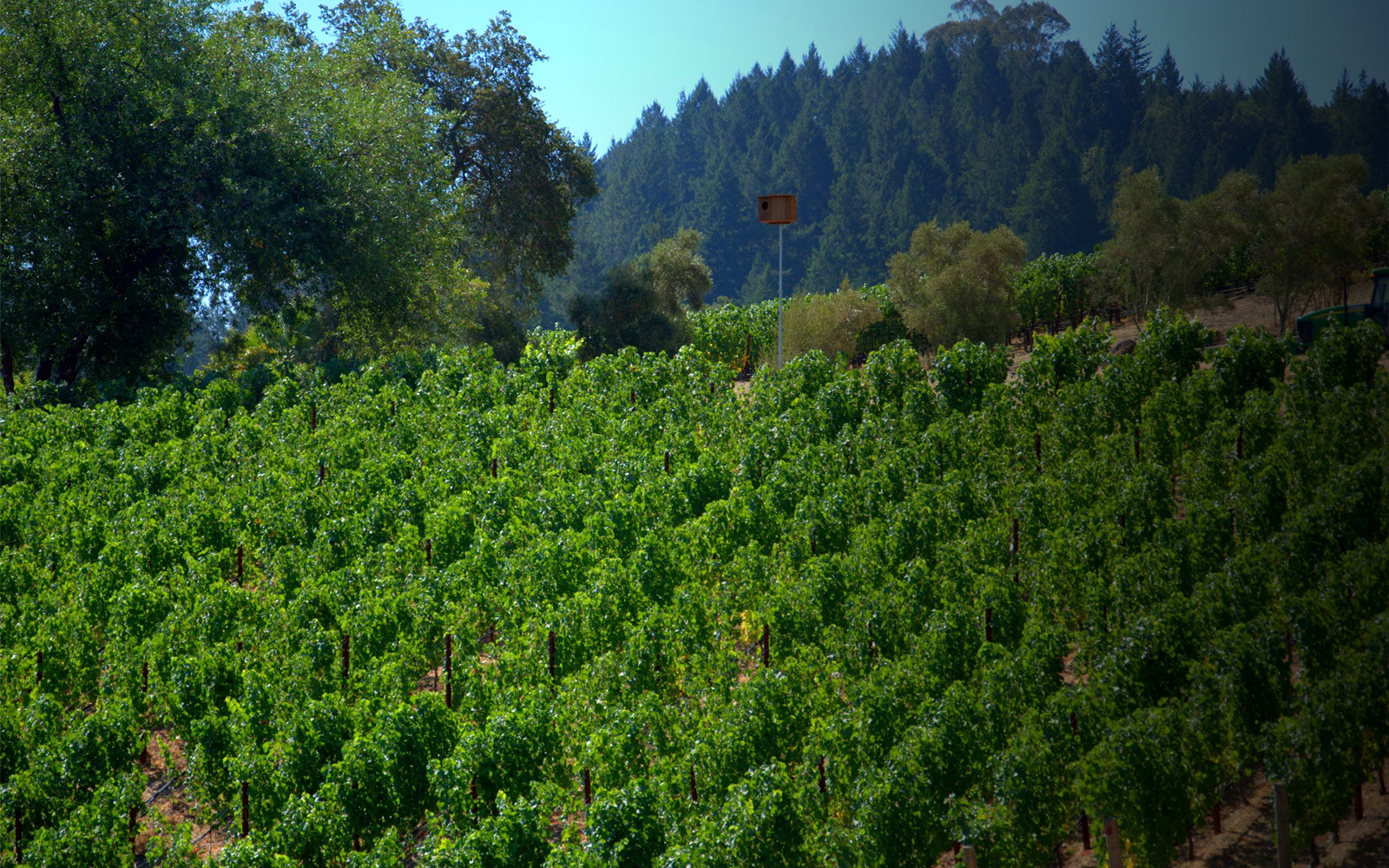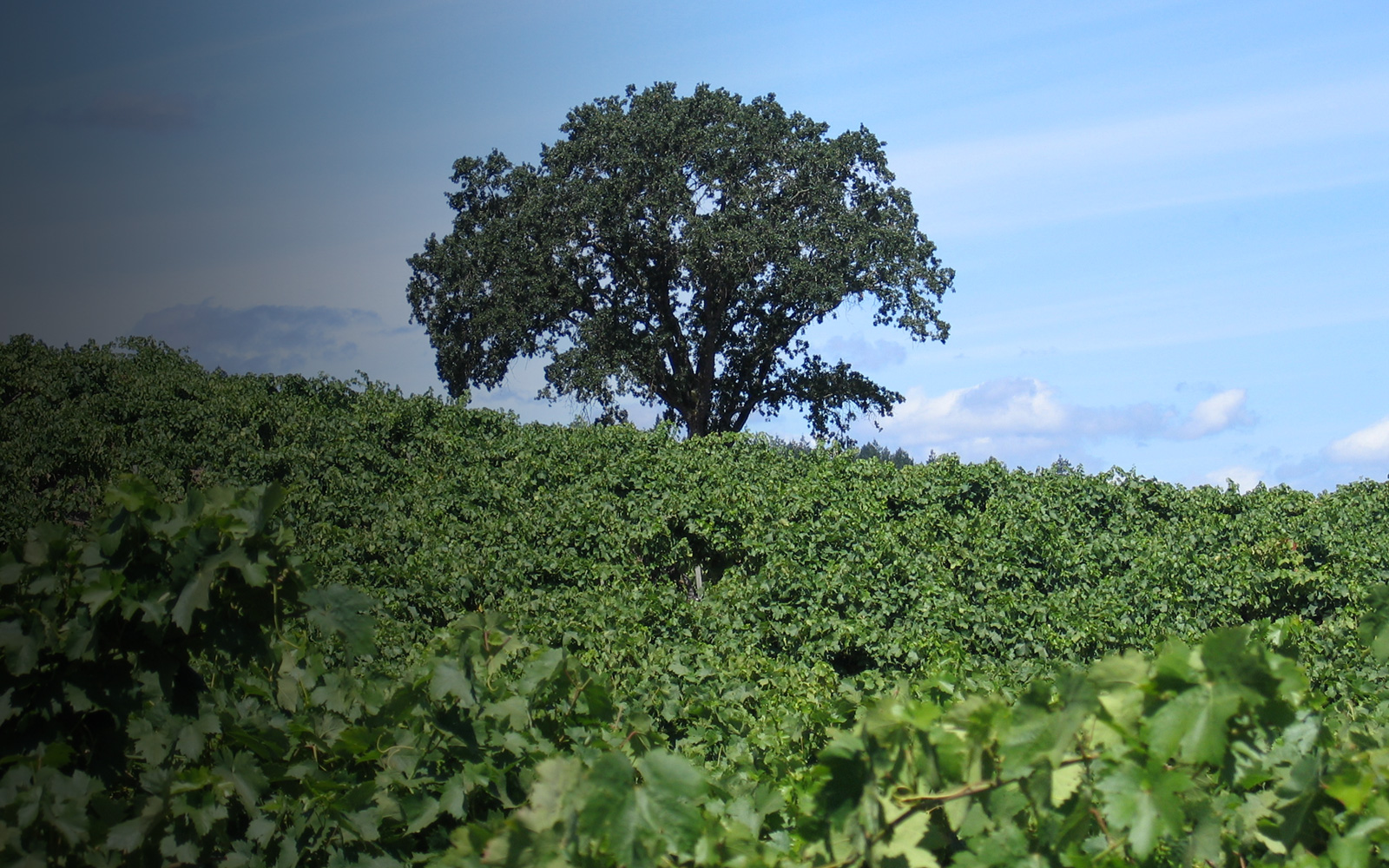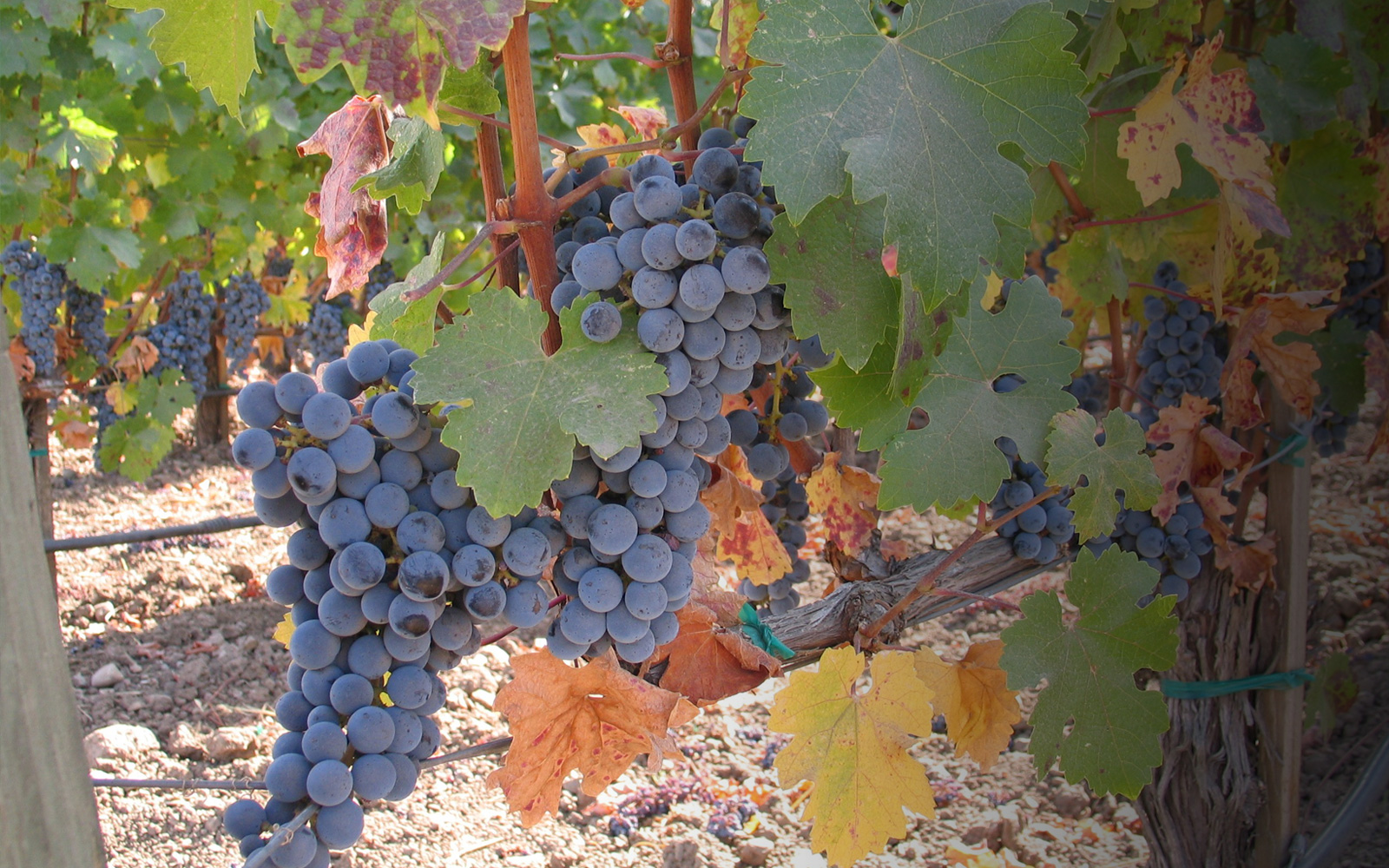


 Close
Close
Planted in 1989, on the lower slopes of the vineyard site, the original blocks of cabernet sauvignon at Vineyard 29 are almost 2.75 acres of Grace Clone bud wood on 5C and 1103P rootstock. In 2000, the 29 Estate plantings were expanded to include 1.25 acres of cabernet franc clone 332 on 101-14 and 3309 rootstock. Additionally, just over half an acre of sauvignon blanc was planted in 2000, with field selections on 420A rootstock.
Our hillside vineyard rests on soil formed from river deposits from the flow of the Napa River many thousands of years ago. The remnants of that water flow have created a gravelly, loamy texture in the present day soil. The soil depth varies from 2 feet at the higher vineyard elevations, to 5 feet on the lower elevations. The quantity and size of sediments vary along the vineyard with larger rocks found on the higher elevation, gradually decreasing in size toward the lower portion of the site. The rocks and gravels provide good aeration, allowing the roots to follow empty spaces through the soil. By reaching deeper into the earth the vines develop strength and the ability to mature gracefully, weathering climate changes from vintage to vintage.
Facing eastward along the lower elevation of the Mayacamas mountain range, Vineyard 29 is ideally situated to capture early morning sunlight. Late in the day, when sunlight is more intense, the upper elevations of the mountain range provide shade for the vineyard allowing the grapes an afternoon respite, resulting in growing seasons where the grapes reach optimal ripeness without the risk of desiccation by too much sun exposure. The orientation of the land, rolling gently along Highway 29 before rising sharply against the eastern face of the Mayacamas, allows optimal drainage which creates the perfect amount of vine stress to yield highly concentrated fruit.
St. Helena experiences a very warm growing season. While Vineyard 29 receives a large number of overall hours of heat each day, its most direct exposure to the sun comes early in the morning when the heat is less intense. Afternoon sunlight falls indirectly on the vineyard, allowing for a slightly cooler afternoon temperature. The vineyard also sees the widest range of day to night time temperature swings in Napa Valley (over 40 degrees in August) setting up the fruit well each morning to withstand the afternoon heat. The result is even and consistent ripening of the fruit. This translates into a rounder, smoother tannin structure from fully ripened skins, and an increased amount of sugar in relation to acid in each berry.
 Close
Close
Our Aida Estate is a historic property that has produced wine since the 1920s when Petite Sirah vines were first planted at this site. Zinfandel wines were planted in 1973. In late 2000, Chuck and Anne acquired Aida, and an upgrade of the vineyard was immediately undertaken with several vine blocks being replanted. Cabernet sauvignon now serves as the backbone for our Aida Estate vineyard; however the old zinfandel vines are still a key part of Vineyard 29’s portfolio, providing fruit for our Aida Estate Zinfandel and our Aida Estate Late Harvest Zinfandel.
Cabernet
Sauvignon:
Blocks 1 and 2 are clone 337 on 3309 and 420A rootstock.
Blocks 3 and 4 are clones MAD and 4 on 101-14 rootstock.
Merlot:
Blocks 5 and 6 are clone 3 on 110R rootstock.
Petit Verdot:
Block 10 are field selections on 3309 rootstock.
Zinfandel:
Blocks 7 and 8 are the Aida clone on St. George rootstock.
At one time, the Napa River flowed over the entire vineyard area at Aida. While the Napa River is contained within narrow banks today, the vineyard soils are generational river deposits, and quite rocky – much like those seen in France’s southern Rhone Valley. Aida’s soils force the vine root systems to work very hard navigating the rocks in search of water. This yields small, concentrated grapes which in turn produce wines with fully ripened fruit flavors and firm tannin structure.
Although technically on the floor of the Napa Valley, between the Vaca and Mayacamas mountain ranges, Aida Vineyard is not at all a flat, “valley floor” site. Stretching from Highway 29 eastward to the Napa River, the vineyards at Aida undulate, encompassing several hillsides and knolls. These hillsides lend effective water drainage, placing stress on the vines and causing them to produce lower yields of highly concentrated grapes.
Our Aida Estate experiences a unique microclimate for the St. Helena appellation. Due to the increased influence of the marine air drawn in from the north the site is slightly cooler than the Vineyard 29 site. Balancing this is the vineyard’s valley floor location and rocky soils, making the growing conditions even warmer than the Vineyard 29 site, resulting in bold concentrated varietals.
 Close
Close
“It’s all about making the wine in the vineyard” is how Keith Emerson, President, CEO and Winemaker at Vineyard 29, describes the philosophy behind our CRU wines. Everything from site selection, crop yield, and picking decisions are made with the final blend in mind. This deliberate, detail-oriented winemaking results in elegantly composed wines that depict the best characteristics of their region. Our CRU Cabernet Sauvignon, CRU Sauvignon Blanc and CRU Rose are composed of fruit from exceptional valley floor and hillside vineyards throughout Napa Valley. Our CRU Pinot Noir fruit comes from stellar vineyards in Oregon’s Willamette Valley. All of our CRU wines are hand-crafted in our gravity flow winery and are an introduction to Vineyard 29’s style – elegance and quality.